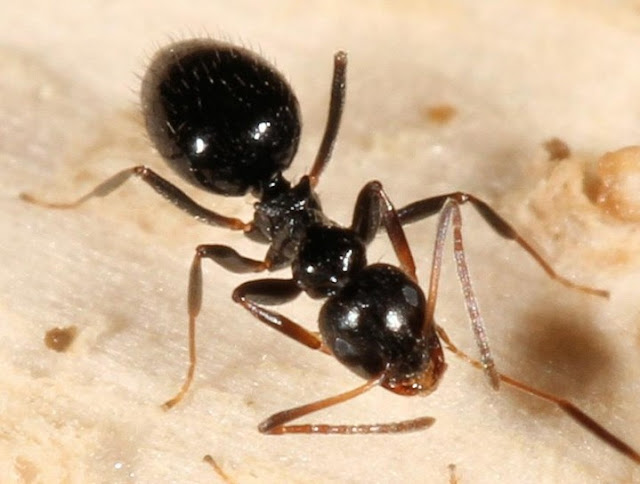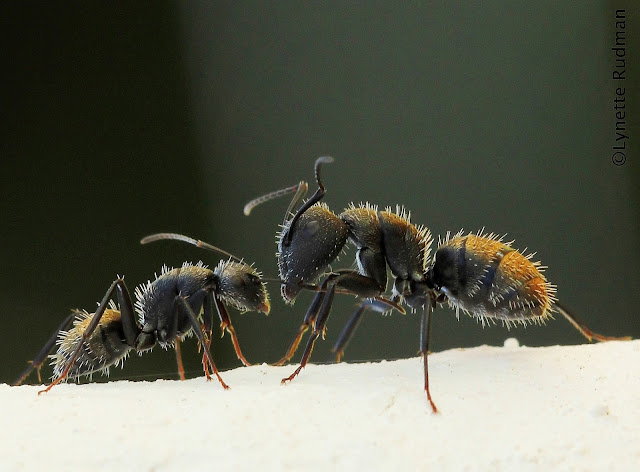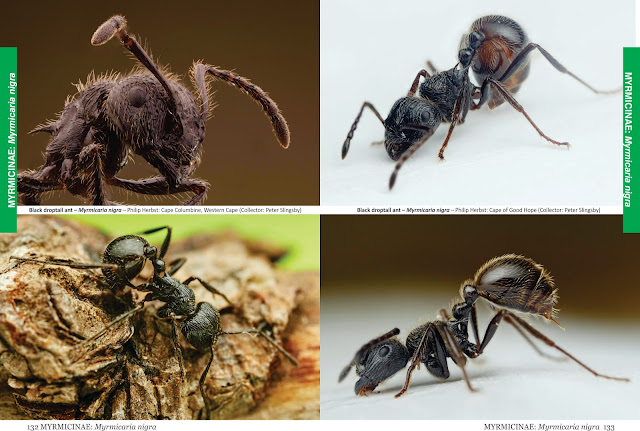It’s on its way at last!
After seven months of intensive reading, research, discussion and revision,
ANTS OF SOUTHERN AFRICA is at the printer!
ANTS OF SOUTHERN AFRICA is at the printer!
It should be available for delivery by March 20th 2017.
Technical details of the book are below, but first ...
SPECIAL OFFER to all you generous iSpot photographers and many others – if you pre-order the book before publication you’ll be eligible for a R50 discount on every copy that you buy online (South Africa only).
What’s more, the first 100 purchasers will receive FREE a 60x mini-microscope worth at least R80.*
* Note:
1. If you want a discount on more than one copy you must buy the books in a single order; the system will disqualify you if it detects your email in a second order;
2. NO MORE FREE MICROSCOPES LEFT - Sorry!
3. Discount only valid on pre-publication orders.
 |
| Lepisiota incisa: Photo by Wynand Uys |
PRE-ORDER here:
1. FOR DELIVERY IN SOUTH AFRICA ONLY:
Go to our Slingsby Maps online shop [click here]; add Ants of Southern Africa to your cart and follow the purchasing procedure [Log in, check out, etc].
*At check-out you’ll be asked for a Discount Code. Enter the word ANTBOOK (all caps) and R50 will be discounted from your bill.
* We recommend that you choose the courier delivery option.
* If you prefer to pre-order by direct EFT, please email me at peter@slingsby.capetown .
2. FOR INTERNATIONAL DELIVERY ANYWHERE ELSE IN THE WORLD: [click here]
DOWNLOAD A SAMPLE CHAPTER (pdf) HERE
 |
| Some of the more than 100 sketches in the book |
TECHNICALS
ANTS of Southern Africa: a Friendly Guide
This is the first Field Guide to Southern African ants ever published. Lavishly illustrated with Philip Herbst's fabulous macrophotographs, and the best of some fifty more observers from ‘iSpot’, the book details 225 of the most common species, with notes about another 400.
“Peter Slingsby writes with humour and with a refreshing lack of pomposity. With its amazing photos and Peter’s superb illustrations ... this is a very welcome addition to the books on the natural history of southern Africa and will surely open eyes and minds to these intriguing and important insects.”
– William Bond, Senior Scientist, SAEON
“The colour images of live ants, the ‘how common’ ranking, providing the actual size, the major habitats, the distribution—all this is genius!”
– Brian L. Fisher, California Academy of Science
 |
| One of Philip Herbst's fabulous photographs that enrich this book |
Details:
Page size 170 x 240 [portrait format];
256 pages, full colour throughout, stitch-bound with semi-hard cover with two gate-folds
Contents include:
The biology of ants
How to identify ants
225 species described and illustrated with more that 300 super photographs and 100 sketches
400+ more species described
Comprehensive habitat and locality endpaper maps, index and bibliography
Foreword by Prof. Emeritus William Bond
Text and sketches by Peter Slingsby
Photography by Philip Herbst and 50 others
Layout and setting by Peter Slingsby
Edited by Maggie Slingsby
ISBN 978-1-920377-04-5
 |
| Christine Sydes' great pic of a Botswana Camponotus fulvopilosus |
Order your book now while the discount applies – and my grateful thanks to all of you whose pictures, comments and support have made this project possible!
– Peter Slingsby, Zandvlei





















